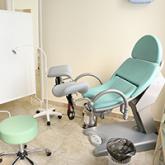Article
Recruiting ObGyns: Starting salary considerations
- Author:
- William F. Rayburn, MD, MBA
- Phillip Miller, BA, BS
The competitive nature of ObGyn recruiting is reflected in rising starting salaries. It remains one of the most recruited...
Article
ObGyn: A leader in academic medicine, with progress still to be made in diversity
- Author:
- William F. Rayburn, MD, MBA
- Iris L. Romero, MD
The steady rise in ObGyn faculty and residents has contributed to greater racial/ethnic diversity than most clinical departments...
Article

Retail health clinics: What is their role in ObGyn care?
- Author:
- Nate A. Bronstein, MsED, MPH, MSSP
- William F. Rayburn, MD, MBA
Retail health clinics provide improved access to episodic care, and half of all visits are by women
Article

Are fewer nonpregnant women seeing ObGyns?
- Author:
- William F. Rayburn, MD, MBA
Yes, according to data from a national population health survey, and that includes women who saw only an ObGyn and those who saw...
News
Is the rate of progress the same for induced and spontaneous labors?
- Author:
- William F. Rayburn, MD, MBA
No. This retrospective cohort study found a significantly longer latent phase when labor was induced, compared with spontaneous labor. Harper LM...
